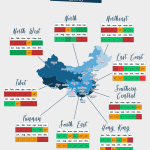Souvenirs
 Inside Painting Snuff Bottle 内画鼻烟壶
Inside Painting Snuff Bottle 内画鼻烟壶
The inside painting snuff bottle is a traditional Chinese handicraft with a history of about 200 years. It is popular in China and abroad for its unique workmanship and exquisite artistic value.
Reportedly, snuffing tobacco was introduced into China during the Ming and Qing Dynasties, and the snuff bottle represents a combination of Chinese and foreign cultures. The snuff bottle is not only a container for tobacco but also a sort of art collection for wealthy businessmen and influential officials.
The inside painting snuff bottle is made of special materials, such as jade, and has a unique shape. Most of the inside paintings are Chinese paintings, and feature vivid pictures, simple colors and elegant layouts, giving the inside painting snuff bottle great artistic and collection value. Moreover, the bottle also reflects Chinese tobacco culture, and represents a historical source for tobacco culture research.
 Cloisonné 景泰蓝
Cloisonné 景泰蓝
Cloisonné is a unique traditional handicraft of Beijing and famous for its blue glaze. It can be traced back to the Yuan Dynasty and became popular during the Ming Dynasty.
Beijing is the origin of the technique of cloisonné. Currently, the oldest cloisonné was made during the Yuan Dynasty and has a history of about 1,000 years. As for the production procedure, red copper is used to make the body, and then a flat, thin copper wire lays out the paintings on the body. After that, colorful enamel materials are used to fill in the painting, and then the next procedures are firing and polishing.
One piece of cloisonné represents a collection of the production procedure for red copper, porcelain, and traditional paintings and sculptures. It can be said that the cloisonné is a collection of all exquisite traditional Chinese handicrafts.
Since Beijing is the origin of the cloisonné, it can be bought in every small- and medium-size shop in the city. Cloisonné products range from temple tablets, hall screens, chairs to chopsticks, earrings and toothpick holders
 Antiques
Antiques
Panjiayuan Antique Market is located southwest of Panjiayuan Bridge, South Road, East Third Ring, Beijing. It is the largest antique market in China, and the cheapest antique market in Beijing.
As the most popular antique market, shops run everyday. Panjiayuan Antique Market covers an area of 48,500 square meters and contains six business zones: the stall zone, the ancient building zone, the ancient furniture zone, the modern collection zone, the stone sculpture zone and the restaurant zone.
In Panjiayuan Antique Market tourists can find various collections, such as antique furniture, four treasures in the study, ancient paintings and books, jade, porcelain, ancient and foreign money, bamboo carvings, Buddhist keepsakes, folk clothes and cultural relics.



 Inside Painting Snuff Bottle 内画鼻烟壶
Inside Painting Snuff Bottle 内画鼻烟壶
















